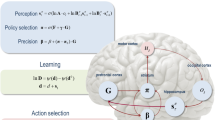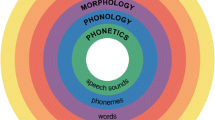Abstract
This paper report on some of the concrete outcomes of a larger research project on the study of syntactic change. In this part of the project, we are collecting and encoding historical texts and tagging them for syntactic analysis. We have so far produced a TEI-conformant version of an Old French text, La Vie de Saint Louis written by Jehan de Joinville around 1305, and we are in the process of adding syntactic tags to this text. Those syntactic tags are derived from the Penn-Helsinki coding scheme, which had been devised for the syntactic encoding of Middle English texts, and have been translated into TEI.
Thus this paper addresses two issues: the development of a TEI encoding for the text, and the adaptation of the Penn-Helsinki syntactic coding scheme. While the first part of this work raises issues of a textual nature independently of the language of the text, and proposes concrete immediate solutions, the second part points to a more general extension of the PH tagset to other types of texts and to other languages.
Similar content being viewed by others
References
Abney, S.. “A Computational Model of Human Parsing”. Journal of Psycholinguistic Research 18(1) (1989).
Burnard, L. and C. M. Sperberg-McQueen. TEI Lite: An Introduction to Text Encoding for Interchange. Document No: TEI U 5. http:/www.uic.edu/orgs/tei/intros/teiu5.tei, 1995.
Chomsky, N. “Principles and Parameters in Syntactic Theory”. In Explanations in Linguistics. The Logical Problem of Language Acquisition. Eds. N. Hornstein and D. Lightfoot, London: Longman, 1981, ch. 2, pp. 32–75.
Chomsky, N. The Minimalist Program, Cambridge: MIT Press, 1995.
Corbett, N. L. La Vie de Saint Louis: Le témoignage de Jehan, seigneur de Joinville, Sherbrooke, Québec: Éditions Naaman, 1977.
Crocker, M. W. Computational Psycholinguistics. An Interdisciplinary Approach to the Study of Language, Dordrecht: Kluwer Academic Publishers, 1996.
Fong, S. Computational properties of Principle-Based Grammatical Theories, PhD Thesis, MIT, Cambridge.
Grimshaw, J. “Projections, Heads and Optimality”. Linguistic Inquiry 28(3), 1997, pp. 373–422.
Harris, A. & L. Campbell.. Historical Syntax in Cross-linguistic Perspective. Cambridge Studies in Linguistics 74, Cambridge: Cambridge University Press, 1995.
Hornstein, N. and D. Lightfoot, Eds. Explanations in Linguistics. The Logical Problem of Language Acquisition, London: Longman, 1981.
Ide, N., G. Priest-Dorman and J. Véronis. Corpus Encoding Standard, Document No: CES 1. Version 1.4., 1996. http://www.cs.vassar.edu/CES.
Keller, R. On Language Change: The Invisible Hand in Language, London: Routledge, 1994.
Kroch, A. S. “Function and Grammar in the History of English”. In Language Change and Variation. Eds. R. Fasold and D. Schiffrin, Current Issues in Linguistic Theory, vol. 52, Amsterdam: John Benjamins, 1989.
Kytö, M. and M. Rissanen. “The Helsinki Corpus of English Texts: Classifying and Coding the Diachronic Part”. In Corpus Linguistics, Hard and Soft: Proceedings of the Eighth International Conference on English Language Research on Computerized Corpora. Eds. M. Kytö, O. Ihalainen and M. Rissanen Language and Computers: Studies in Practical Linguistics No. 2., Amsterdam: Rodopi, 1988
Li, C., Ed. Mechanisms of Syntactic Change. Austin: University of Texas Press, 1977.
Lightfoot, D. Principles of Diachronic Syntax, Cambridge: Cambridge University Press, 1979.
Lightfoot, D. “Explaining Syntactic Change”. In Explanations in Linguistics. The Logical Problem of Language Acquisition, Eds. N. Hornstein & D. Lightfoot, London: Longman, 1981.
Lightfoot, D. How to Set Parameters: Arguments from Language Change, Cambridge, MA: MIT Press, 1991.
Lin, D. “PRINCIPAR — An Efficient, Broad-coverage, Principle-based Parser”. Proceedings of COLING94, 1994, pp. 482–488.
Pope, M. K. From Latin to Modern French, Manchester: Manchester University Press, 1952 (1934).
Robinson, P. M. W. “Computer-Assisted Stemmatic Analysis and ‘Best-Text’ Historical Editing”. In Studies in Stemmatology, Eds. P. van Reenen and M. van Mulken, Amsterdam: John Benjamins, 1996, pp. 71–103.
Shaw, M. R. B. Joinville and Villehardouin: Chronicles of the Crusades, London: Penguin Books, 1963.
Stabler, E. The Logical Approach to Syntax: Foundations, Specifications, and Implementations of Theories of Government and Binding, Cambridge, MA: ACL-MIT Press Series in Natural Language Processing, 1992.
Taylor, A. & A. Kroch. The Penn-Helsinki Parsed Corpus of Middle English, MS. University of Pennsylvania, 1994.
Author information
Authors and Affiliations
Rights and permissions
About this article
Cite this article
Estival, D., Nicholas, N. TEI Encoding and Syntactic Tagging of an Old French Text. Computers and the Humanities 33, 155–174 (1999). https://doi.org/10.1023/A:1001762830439
Issue Date:
DOI: https://doi.org/10.1023/A:1001762830439




